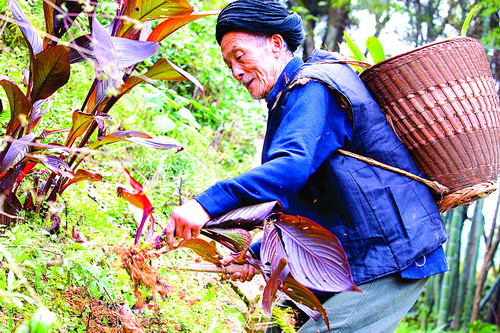Researchers try to provide a new model for ethnic tradition protection

Tujia people in Wulin Region
Recently, the National Social Science Fund’s major project, “Studies on Modern Utilization and Protection of Traditional Minority Knowledge: Taking Tujia in Wuling Region as an Example,” has achieved significant results. The study is led by Bo Guixi, curator of the Museum of South-Central University for Nationalities. The project investigates protection and modern use of traditional knowledge from three aspects: theory, empirical evidence, and countermeasures. It aims to propose a strategic vision and specific measures, providing a reference basis for policy makers.
Why do the Tujia in the Wuling Region make an archetypical example for preserving minority knowledge? Bo notes that the Tujia are a Chinese ethnic group with a long historyof ingenuity. As the same time, Wuling mountain, the region inhabited by the Tujia, is an area with abundant biodiversity. The Tujia people have created and accumulated a rich traditional knowledge surrounding the identification and use of biological resources, as well as diverse modes of representation to express that knowledge over the course of their long history. Tujia knowledge remains unique among that of the various ethnic groups in China. Taking Tujia knowledge as a case study for further analysis has great academic value and practical significance as a model for protecting minority knowledge.
The researchers noted three key areas of focus for protection of traditional knowledge: conservation, maintaining fidelity, and intellectual property protection. They further noted thee goals for protection, including recognizing and respecting the value of traditional knowledge, inheriting traditional knowledge systems, and protecting the intellectual property of ethnic groups with traditional knowledge.
In order to achieve these strategic objectives, the researchers proposed making efforts to document traditional knowledge (including constructing databases), to foster community participation and protection mechanisms, and to strengthen China’s legal system with regards to intellectual property design and innovation. Additionally, community participation and adequate intellectual property laws are important means for ensuring future generations’ inheritance of traditional knowledge.
Faced with current cultural conflict and pressure toward assimilation and integration, Bo notes that the pace of traditional knowledge’s extinction is only being exacerbated by the impact of modern scientific knowledge. As such, strengthening the modern value, modern use and protection of traditional knowledge has great theoretical and practical significance.
Tan Zhiman, a professor at Hubei Institute for Nationalities, said that the traditional knowledge of ethnic minorities is being threatened in the process of modernization. Experts and scholars should pay more attention to the research findings on contemporary use and protection of minority traditional knowledge. Zeng Benxiang, a scholar from the Australia Indigenous Research Center, noted that the study addresses the importance of such elements as cultural origins in the protection of traditional knowledge systems. Furthermore, he indicated the research would provide an excellent case study for global protection of indigenous and aboriginal knowledge, as well as related studies, making a great contribution for the protection and use of mankind’s precious cultural heritage.
Xue Qian is reporter for Chinese Social Sciences Today.
Chinese Social Sciences Today, No.364, Oct.10, 2012.
(Translated by Yang Lu)
